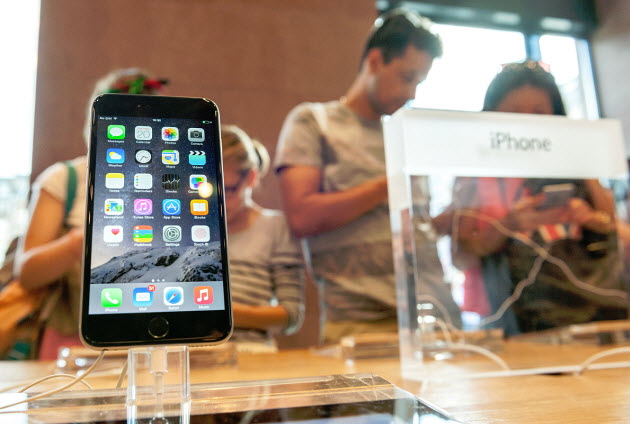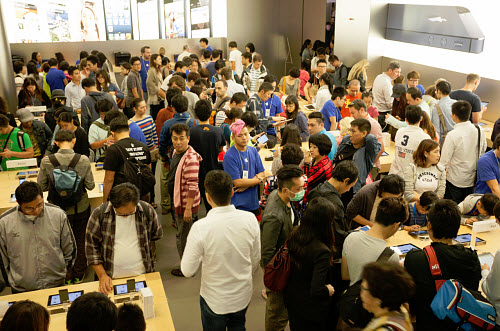“Programmatic” ad purchases are being accepted by the tech company and its partners.
Apple and a slew of partner companies have now made the official announcement that the iAd network has begun accepting “programmatic” mobile marketing ad purchases, in a move that has thrown Apple in direct competition with a range of other smartphone and tablet based advertising services.
The initial intention of Apple to begin its automated iAds program had been leaked a few days ahead of the official launch.
This leak occurred when Rubicon Project, one of the Apple partners, accidentally made an early publication of its press release. However, the official announcement of the iAds mobile marketing advertising came at the end of last week, on Friday, with the official debut of its new automated system. There are a number of other partner companies other than Rubicon Project. They include MediaMath, The Trade Desk, and AdRoll tech companies.
This mobile marketing system will involve the integration of a number of platforms with iAd Workbench tools.
 The tools make it possible to reach consumers in a targeted, cross-device mobile advertising campaign. The focus is specifically for iPhone and iPad users, which are known to be the shoppers that make the largest purchases online over their devices.
The tools make it possible to reach consumers in a targeted, cross-device mobile advertising campaign. The focus is specifically for iPhone and iPad users, which are known to be the shoppers that make the largest purchases online over their devices.
This represents a considerable change in the mobile advertising inventory from Apple. It makes it possible for iAds to be purchased and sold within an open marketplace, which will simplify the process for marketers to be able to purchase audiences. Through the use of programmatic buying, it becomes possible for marketers to be able to use auctions to bid on the placements of their ads. This process has already shown to be popular over other ad networks.
When AdRoll made its announcement as a partner in iAds, it explained that customers will be capable of conducting their campaigns by way of “Apple’s proprietary, privacy minded consumer data sets gleaned through iTunes.” Advertisers will have the tools that they need to build a campaign, to update it, to obtain analytics, and to manage bids throughout iAd by way of the partner third party platforms.
A recent study has shown that 1 in 10 smartphone based ad impressions brings shoppers into stores.
A new report has been released by xAd, a mobile ad startup, that has revealed some interesting new insight into the impact that mobile marketing is having on shoppers who are being influenced by the advertising that they receive.
The report was based on a study conducted by the company, and showed that people are responding to mobile ads.
The mobile marketing study looked into the way that smartphone ads impacted store visits within the retail, restaurant, and auto industries. What it found was that connected with consumers in this way was leading to more store visits and was improving offline conversions. These findings are important because mobile marketers have been struggling to be able to measure the success of their campaigns, as many consumers do not actually make their purchases over the same device that they receive the ads. This makes conversions a challenge to measure.
The mobile marketing report from xAd was based on the results of a study that Nielsen conducted on their behalf.
 xAd brought in the expertise of Nielsen in order to both analyze and measure the effectiveness of mobile ads across 12 major brands and almost 80 individual smartphone based advertising campaigns within the retail, restaurant, and auto sectors. The report focused on the use of creative messaging and location based proximity targeting and the way that outcomes were impacted by those campaigns.
xAd brought in the expertise of Nielsen in order to both analyze and measure the effectiveness of mobile ads across 12 major brands and almost 80 individual smartphone based advertising campaigns within the retail, restaurant, and auto sectors. The report focused on the use of creative messaging and location based proximity targeting and the way that outcomes were impacted by those campaigns.
What it found was that 10 percent of the smartphone users that actually looked at a retailer’s ad on a mobile device did eventually visit the store location of that retailer. Moreover, the research also determined that 77 percent of transactions that begin over smartphones and tablets and up being completed in a brick and mortar shop.
The director of marketing at xAd, Sarah Ohle, explained that “What we’re really trying to do in this study is understand the full potential of mobile.” She added that “One of the great things about mobile is obviously that you can reach people online and have them engage you. That gets a lot of focus.” However, she pointed out that what mobile marketing is capable of doing that other past forms of media cannot is to track behavior that occurs offline.
 The tools make it possible to reach consumers in a targeted, cross-device mobile advertising campaign. The focus is specifically for iPhone and iPad users, which are known to be the shoppers that make the largest purchases online over their devices.
The tools make it possible to reach consumers in a targeted, cross-device mobile advertising campaign. The focus is specifically for iPhone and iPad users, which are known to be the shoppers that make the largest purchases online over their devices.
 xAd brought in the expertise of Nielsen in order to both analyze and measure the effectiveness of mobile ads across 12 major brands and almost 80 individual smartphone based advertising campaigns within the retail, restaurant, and auto sectors. The report focused on the use of creative messaging and location based proximity targeting and the way that outcomes were impacted by those campaigns.
xAd brought in the expertise of Nielsen in order to both analyze and measure the effectiveness of mobile ads across 12 major brands and almost 80 individual smartphone based advertising campaigns within the retail, restaurant, and auto sectors. The report focused on the use of creative messaging and location based proximity targeting and the way that outcomes were impacted by those campaigns.